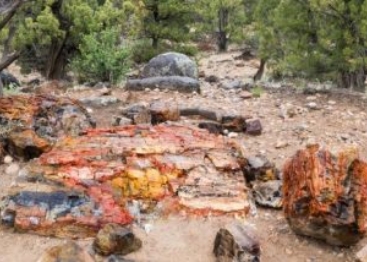10 Breathtaking Relics from Ancient Civilizations and Their Secrets
For all the marvels of the modern world, there’s something captivating about ancient creations that continue to astound us even today. We live in an era of cutting-edge technology, where it’s easy to assume that we are far more advanced than our ancestors. Yet, every now and then, we stumble upon a relic from the distant past that defies explanation, forcing us to reconsider just how sophisticated ancient civilizations truly were.
From impossibly precise architecture to lost technologies that still baffle scientists, history is full of mysteries that challenge our understanding of human ingenuity. Some of these ancient wonders seem almost supernatural, as if they were created with knowledge beyond their time. Others raise intriguing questions about how they were built, what they were used for, and whether we’ve even begun to unlock their true secrets.
As we explore some of the most fascinating relics of ancient history, prepare to be amazed—because the past still holds surprises that modern science has yet to fully explain.
10. The Antikythera Mechanism: Ancient Greece’s Astonishing 2,000-Year-Old “Computer”
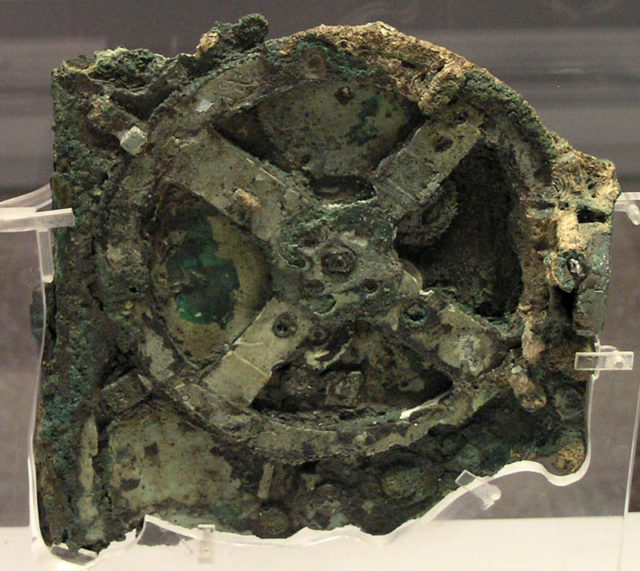
Think computers are a modern invention? Think again. In 1901, divers off the coast of Antikythera, Greece found a bizarre bronze device that would rewrite history – what we now call the world’s first analog computer.
This intricate clockwork machine, dating back to 100 BC, contained:
✓ 30 precision bronze gears (technology not seen again until the 1500s!)
✓ Dials that predicted planetary positions with shocking accuracy
✓ A lunar calendar and eclipse forecasting system
✓ Even a countdown timer for the ancient Olympics
At first, archaeologists thought it was just an odd clock. But after decades of study, they realized it was essentially an ancient astronomical calculator. Input any date, and its gears would display:
• Where the sun and moon would appear
• The positions of five known planets
• Upcoming solar eclipses
• Important Greek athletic events
What’s truly mind-blowing? This technology was 1,000 years ahead of its time. While medieval Europe was still in the Dark Ages, some ancient Greek genius had built a mechanical universe in a box.
Was it used by sailors? Philosophers? Temple priests? We may never know. But one thing’s certain – the Antikythera Mechanism proves our ancestors were far more advanced than we ever imagined.
9. The Baghdad Battery: An Ancient Mystery with a Shocking Twist
In the world of archaeological oddities, few artifacts are as intriguing as the Baghdad Battery. Discovered in Khujut Rabu, near Baghdad, this seemingly simple clay jar holds a baffling secret—it may have been used as a primitive electrical device over 2,000 years ago.
The artifact consists of a copper cylinder, an iron rod, and a stopper made of asphalt. When filled with a liquid like vinegar or lemon juice, the setup produces a small 1.1-volt charge—enough to earn it the nickname the Baghdad Battery. While this may not seem impressive today, the fact that an ancient civilization might have understood the principles of electricity is truly astonishing.
But what was it actually used for? Since there were no written records explaining its purpose, theories abound. Some experts believe it was used for electroplating, allowing artisans to coat objects in gold or silver. Others suggest it might have played a role in religious ceremonies, possibly giving off a mild electric shock to those who touched it—an effect that could have been perceived as mystical or divine.
Whatever its true function, the Baghdad Battery serves as a reminder that ancient civilizations may have been more technologically advanced than we often assume. Did they truly understand the potential of electricity, or is this just an accidental discovery? Either way, this relic from the past continues to spark curiosity among historians and scientists alike.
8. The Mind-Blowing Mystery of Nan Madol: A Coral Reef City Built by Ancient Engineers
Imagine a lost city rising from turquoise waters, its black stone walls defying the tides for centuries. Welcome to Nan Madol, the only ancient city ever built on a coral reef—a place so bizarre, even locals whisper it’s haunted by spirits. Nestled in Micronesia, this engineering marvel was the epicenter of the Saudeleur dynasty, who ruled here for over a thousand years. And let’s be real: their construction skills would put modern builders to shame.
A City That Shouldn’t Exist
Spanning 200 acres, Nan Madol isn’t just ruins—it’s a labyrinth of 92 artificial islands, painstakingly stacked like LEGO blocks between the 13th and 17th centuries. But here’s the kicker: the builders didn’t use metal, wheels, or even pulleys. Instead, they hauled 750,000 metric tons of volcanic rock through dense jungle, some stones weighing a jaw-dropping 50 tons. How? Nobody knows. Some say log ramps, others swear it was magic—and honestly, with feats like this, who’s to argue?
The Ultimate Flex of Ancient Engineering
The basalt columns (some 20 feet long!) were fitted together like a giant puzzle, forming walls that still stand today. Picture this: an island of 30,000 people, no cranes, no steel—just sheer muscle and ingenuity. And the craziest part? The rocks came from miles away, across thick forests and choppy waters. Even today, archaeologists scratch their heads over the logistics.
Ghosts, Legends, and Unanswered Questions
Now? Nan Madol is a ghost town—literally. Locals avoid it, convinced it’s crawling with ancient spirits. And who can blame them? Between the eerie silence and the sheer scale of the ruins, it’s easy to believe something supernatural happened here. Was it aliens? Lost tech? Or just human brilliance pushed to its limits?
One thing’s for sure: Nan Madol isn’t just a relic—it’s a mind-bending mystery that proves our ancestors were way more advanced than we thought. Want proof? Go see it yourself… if you dare.
7. The Gabon Reactor: Nature’s 2-Billion-Year-Old Nuclear Power Plant
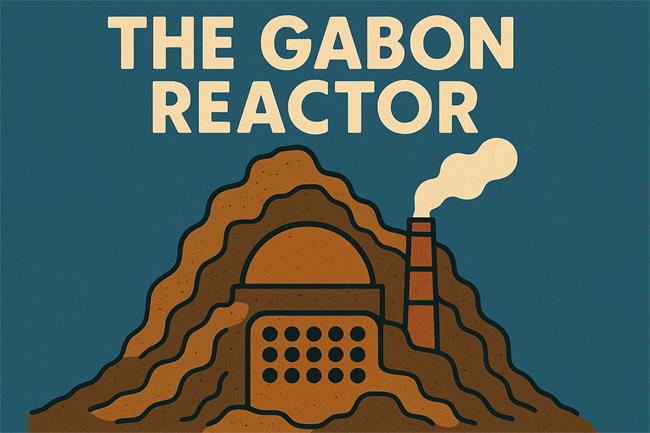
Picture this: deep in the jungles of Gabon, West Africa, lies the remnants of something that shouldn’t exist—a natural nuclear reactor. Not built by humans, not powered by scientists, but forged by Earth itself over two billion years ago. That’s right—nature accidentally invented nuclear fission long before we even existed.
A Cosmic Fluke or Earth’s Hidden Genius?
This prehistoric reactor, known as the Oklo phenomenon, wasn’t some minor chemical reaction—it produced 100 kilowatts of energy, running on and off for over a million years. To put that in perspective, that’s enough to power a small neighborhood today. And the craziest part? It worked just like a man-made reactor, complete with fission, moderators, and waste containment.
How Did a Jungle Become a Nuclear Lab?
The secret? Uranium-235—the same stuff we use in reactors today. But back then, Earth’s uranium was far more concentrated, creating the perfect conditions for self-sustaining fission. Here’s how it went down:
- Water seeped in, acting as a natural neutron moderator (slowing down reactions just like in modern plants).
- The uranium-rich ore arranged itself in the right geometry—basically, nature got lucky with the setup.
- Boom (not literally)—controlled nuclear reactions started happening, cycling on and off for millennia.
Even the radioactive waste was handled better than some modern facilities—it stayed locked underground, undisturbed for billions of years. Take that, Chernobyl.
Why Can’t This Happen Today?
Simple: Uranium-235 isn’t as potent now. Over time, its levels dropped, making natural reactors impossible today. But back then? Earth was basically running its own proto-nuclear experiments—no scientists required.
The Ultimate “Glitch in the Matrix”
If this doesn’t blow your mind, what will? A jungle once functioned like a power plant, all by accident. Was it divine luck? A freak geological event? Or proof that nature’s way smarter than we think?
Either way, the Gabon reactor is one of Earth’s most unexplained wonders—a silent, ancient reminder that sometimes, reality is stranger than sci-fi.
6. The Enigmatic Stone Spheres of Costa Rica: Ancient Perfection Without Explanation
Scattered across Costa Rica, deep within jungles and ancient settlements, lie hundreds of massive stone spheres—some as large as 8 feet in diameter and weighing up to 16 tons. Their perfectly rounded shapes and unknown origins have baffled researchers for decades, making them one of the world’s most intriguing archaeological mysteries.
These spheres, believed to have been crafted by the Diquís culture between 600 AD and 1000 AD, remained largely hidden until the 20th century, when fruit companies clearing land for banana plantations stumbled upon them. Since then, more than 300 spheres have been discovered, yet their purpose remains completely unknown.
Despite speculation, no concrete evidence has surfaced to explain why these spheres were made. Some theorists have suggested they were used as status symbols, aligned for astronomical purposes, or even part of an ancient lost civilization’s ritual. However, most explanations have been purely speculative, with researchers spending more time debunking myths than confirming facts.
With no surviving written records from the Diquís people, the true significance of these perfectly crafted stone spheres may forever remain a lost secret of the past. But one thing is certain—these artifacts stand as a testament to the incredible skill and craftsmanship of an ancient society, leaving us with more questions than answers.
5. The Scythians’ Golden Secret: Ancient Warriors Who Partied With 24-Karat Bongs

You think modern stoner culture is wild? Meet the Scythians—ancient nomadic warriors who dominated the Eurasian steppes from 900 BC to 400 AD, mastering horseback combat… and next-level herbal recreation. Archaeologists in Russia dug up their ultimate party gear: 2,400-year-old solid gold bongs, still caked with traces of cannabis and opium. That’s right—these guys were getting high in luxury.
Warriors Who Burned More Than Just Enemies
The Scythians weren’t just fierce fighters—they were pioneers of altered states. Historical records describe them smoking herbs and brewing mind-bending teas before battle. Some scholars think these rituals were spiritual; others say they just really liked to chill. Either way, their golden bongs (yes, actual gold) prove they took their sessions seriously.
Why Gold? Because Why Not?
Most ancient drug paraphernalia was basic—wood, clay, maybe bronze if you were fancy. But the Scythians went all out with intricate gold vessels, likely used in elite ceremonies. The fact that opium and cannabis residue survived millennia inside them suggests these weren’t just decorative—they were well-loved.
The Original “Smoke Before Battle” Strategy
Greek historian Herodotus wrote that Scythians would hotbox their tents with hemp smoke, laughing and howling in euphoria. Some theories suggest they used psychoactive brews to induce trances or numb pain before combat. Imagine facing an army of high, gold-hoarding horse lords—terrifying and kind of iconic.
A Lost Legacy of Excess
These bongs weren’t just tools—they were status symbols, likely buried with chiefs as grave goods. Today, they’re a hilarious yet fascinating reminder that humanity’s love of mind-altering substances is older than history itself.
Final Thought: Next time someone calls cannabis a “modern trend,” hit ‘em with the Scythian gold bong story. Mic drop.
4. The Terracotta Army: A Masterpiece of Ancient Individuality
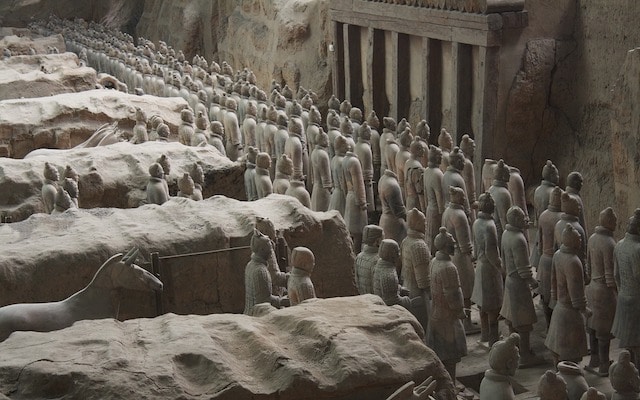
The Terracotta Army, created over 2,000 years ago for China’s first emperor, Qin Shi Huang, is one of the most awe-inspiring discoveries in archaeology. With more than 7,000 life-sized soldiers, complete with horses and chariots, it stands as a remarkable testament to the emperor’s ambition and the craftsmanship of the time.
What makes this buried army even more fascinating is the incredible level of detail given to each warrior. At a glance, they may appear identical, but a closer look reveals that no two soldiers are exactly alike. Each figure has unique facial features, hairstyles, and uniforms, leading some archaeologists to believe they might have been modeled after real soldiers in Qin Shi Huang’s army.
One of the most intriguing aspects is their ears—a feature so distinct that experts suggest they may have been deliberately sculpted to differentiate each warrior. From meticulously carved armor to individualized expressions, the level of precision is extraordinary, especially considering the tools and techniques available in ancient China.
Discovered in 1974 by farmers digging a well, the Terracotta Army continues to captivate historians and visitors alike, offering a glimpse into the past while preserving a mystery that may never be fully unraveled.
3. The Dino Mummy: A Prehistoric Time Capsule
Discovering dinosaur fossils is nothing new, but the nodosaurus unearthed in 2011 at Millennium Mine, Alberta, is something truly extraordinary. Unlike typical fossils—where only stone-like bones remain encased in rock—this specimen was so well-preserved that it looked more like a creature frozen in time rather than a fossilized skeleton.
Nicknamed the “Dino Mummy,” this nodosaurus belonged to the ankylosaur family and measured 18 feet long, weighing around 3,000 pounds. Researchers believe it likely died near a body of water, eventually floating out to sea before sinking into the mud, which created the perfect conditions for its astonishing preservation.
What sets this find apart is that its skin, armored plates, and scales remain intact—a phenomenon almost unheard of in dinosaur discoveries. The level of detail is so striking that, rather than appearing like a skeleton, the nodosaurus looks like it’s just taking a nap. Even more fascinating, scientists found traces of pigmentation in the remains, meaning they can finally make educated guesses about the dinosaur’s actual color—something that had always been pure speculation before.
This prehistoric time capsule offers an unprecedented glimpse into how these creatures looked in life, making it one of the most significant dinosaur finds of all time.
2. The Lloyds Bank Log: A $39,000 Viking Turd That Rewrote History
Let’s talk about the most valuable poop ever found—yes, you read that right. In 1972, construction workers digging under a Lloyds Bank branch in York, England, hit the archaeological jackpot: a 1,200-year-old Viking turd, fossilized to perfection. Meet the Lloyds Bank coprolite—a 8-inch-long, 2-inch-thick relic that’s worth $39,000 and holds disgusting secrets about Viking life.
Why Is This Poop Famous?
Most ancient waste decomposes, but this one defied the odds (and time). Scientists analyzed it and discovered:
- A meat-heavy diet (classic Viking fuel).
- Grains and pollen (probably from bread or porridge).
- Hundreds of parasite eggs—meaning this poor warrior’s gut was a battleground of wriggling horrors.
Imagine the agonizing stomach cramps this guy endured while raiding England. No wonder Vikings were so angry.
A $39,000 Piece of… History?
Why’s it so valuable? Because fossilized human waste is RARE, and this one’s packed with clues about Viking health, diet, and even their hygiene standards (spoiler: terrible). It’s like a time capsule, but way grosser.
The Ultimate Conversation Starter
This turd has been studied, displayed, and even insured—because when a 1,200-year-old poop survives, you protect it at all costs. Next time someone says their job is crap, remind them: some crap is priceless.
1. The Djoser Pyramid: The Birth of Egyptian Pyramids
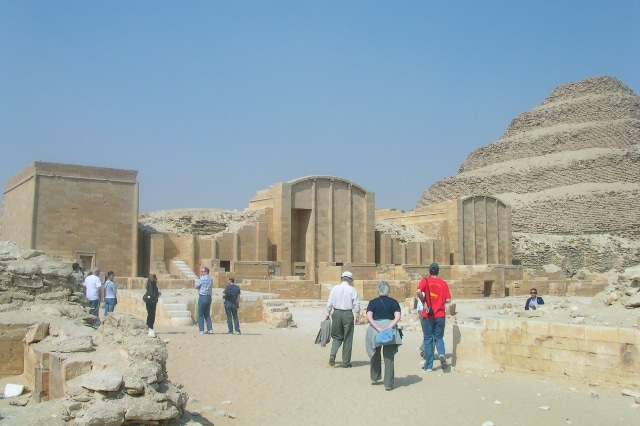
While the Great Pyramid of Giza often steals the spotlight when people think of ancient Egypt, another pyramid holds a place of immense historical importance: the Pyramid of Djoser. Dating back to 2630 BCE, this pyramid is actually the oldest in all of Egypt, predating the iconic Giza pyramid by centuries.
What makes the Pyramid of Djoser so significant is that it was the first successful pyramid—a groundbreaking architectural achievement that paved the way for the many pyramids that followed. Without its success, the massive pyramidal structures we associate with ancient Egypt may never have existed. This pyramid marked the beginning of an era, forever changing the course of architectural history.
The visionary behind this early masterpiece was Imhotep, a name many people might recognize from films like The Mummy. Imhotep wasn’t just an architect; he was also the Egyptian god of wisdom and medicine. His brilliance earned him divine status after his death, and his influence extended well beyond his architectural achievements.
While the Djoser Pyramid is smaller than the Great Pyramid at Giza, it holds an even more foundational role in Egyptian history, symbolizing the beginning of one of the greatest architectural traditions the world has ever seen.
















